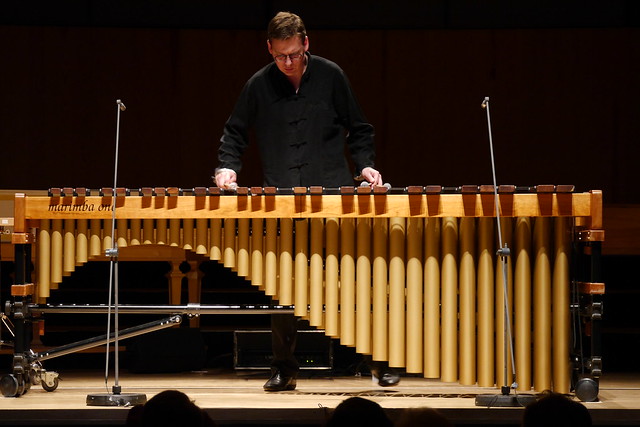Your drums are not just instruments that you set on a stage and play, and then take home again for practice without ever touching them for maintenance or cleaning. The truth is, if you don't want to take the time to clean them and keep them properly tuned, you are not true to your trade. Depending on the type of drums that you have, there way be variations on the maintenance that the manufacturer recommends. How you care for your set depends also on the material from which it is made.
 |
| Dave Weckl's drum kit @ Jazz Alley, Seattle, WA, 8th Dec. 2007 (Photo credit: Wikipedia) |
So, if there isn't a rule regarding drum care, what do you do? As with your clothing, you follow the recommendations of the manufacturer. When you buy a new outfit, you check the label for laundering instructions – or you should – and the same is true of your drum set. Cymbals for the most part can be cleaned with a window cleaner, but how you clean your drums needs to be depends upon a variety of factors including material of the skins and of the outside. Steel is not recommended, though sometimes used, and there will be a different method than other material, which is usually simply soap and water or even glass cleaner for a shine.
As a drummer, you should be proud of your skins and want to keep them clean in between performances. It doesn't take more than perhaps a half hour a day to keep your set looking in top condition, but you want to make sure that you know exactly what you need to do before you even take the set home. If you order your drum set online, be sure you read all of the instructions regarding care and maintenance before you ever set up the kit, because some kits require oiling before you ever use the drums for the first time. Failing to do that when required can result in your drums sounding out of tune or not blending in with the rest of the musical instruments in the band.
Bear in mind that your drums are a major investment, and if you want them to last you for years to come, you have to take the time to take care of them from the day you first own them. You do not simply leave them to collect dust when you are not using them nor do you only take them in for maintenance when they don't sound as good as they did when they were new. Regular cleaning and routine maintenance will be your drum kit looking and sounding new for many years to come. It is unnecessary to buy a new set every few years if you take care of what you have from the start.









